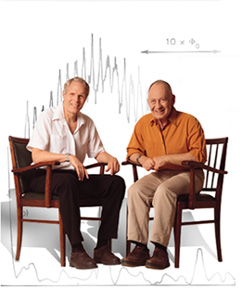Are you a journalist? Please sign up here for our press releases
Subscribe to our monthly newsletter:
"A quantum device will be able to distinguish between many states, compared with the two states that are detected by an ordinary electronic device. This difference may lead to greater efficiency in various electronic instruments and dramatic changes in their structure, both on the surface of our planet and in outer space."
Prof. Mordehai Heiblum
Head of the Joseph H. and Belle R. Braun Center for Submicron Research

To illustrate: we customarily conceive of the electron as a particle located within a large chunk of matter. We can accurately predict how far this very small crumb will go when pushed and exactly what it will do. But if that same electron is located in a chunk of material one-tenth of a micron in size, it will not only behave as a particle but will also behaves as a wave, i.e., it will be located at many places at once.
This odd situation, in which many realities can occur simultaneously, is not the exclusive province of science fiction or children's games. It is in fact a basic concept of quantum theory. Weizmann Institute scientists, led by Profs. Mordehai Heiblum and Yoseph Imry of the Condensed Matter PhysicsDepartment are aiming to make this multiple reality an integral part of our everyday lives.
The race to miniaturize electronic devices is now penetrating the field of quantum theory. In the tiny devices, whose precursors are on display in the Institute's Braun Center for Submicron Research, the electron waves move simultaneously on several paths, while interacting or colliding with each other. Thus, inevitably, the technological certainties to which we have become accustomed are coming to an end. In the approaching era of quantum technology, "reality" will carry a different meaning.